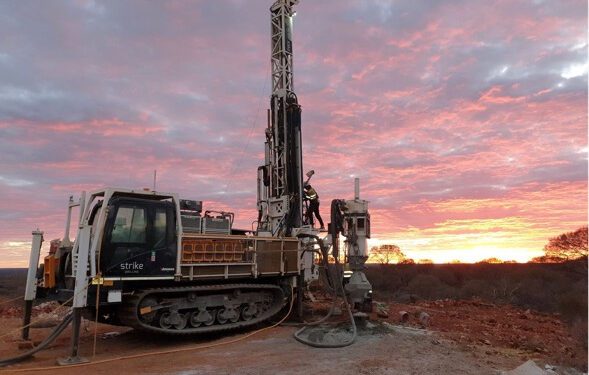St George Mining Limited (ASX: SGQ) has obtained significant new results from geophysical surveys completed at its flagship Mt Alexander Project in Western Australia.
“With multiple high-grade discoveries at the Project and large areas of tenure underexplored, Mt Alexander is one of the most prospective nickel-copper-PGE sulphide projects in Western Australia,” Executive Chairman, John Prineas, said.
“We are delighted that the latest seismic and EM surveys have delivered a number of targets that have potential to add to our existing discoveries.
“Significantly, the new targets are in unexplored areas of the project identified as having potential for new, large deposits. We look forward to progressing these targets to drill testing in the coming weeks.
“We are also finalising our review of the lithium prospectivity at Mt Alexander with our report expected very shortly.
“Investor interest in the lithium potential of this area is growing with continuing success by Red Dirt Metals at its nearby lithium project and Zenith Minerals (ASX: ZNC) also commencing its lithium search in Mt Alexander.”
Geophysical programme generates pipeline of targets
Three 2D seismic lines were completed encompassing 13-line kilometres. Processing and modelling of the seismic data is being undertaken by external consultants at Rock Solid Seismic.
The moving loop EM (MLEM) survey utilised an ARMIT sensor and was completed with 200m close line spacing and 100m stations.
Modelling and interpretation of the EM data is being completed by external consultants at Newexco.
Granite/greenstone contact
The interpreted contact and related structures between the Mt Alexander greenstone belt and the granites is considered prospective for nickel sulphide mineralisation. It is a setting that is known to host high-grade nickel in other parts of the Yilgarn Craton, including the Flying Fox and Spotted Quoll deposits at Forrestania.
Typically in this setting, late-stage granites can disrupt existing greenstones resulting in the remobilisation and concentration of sulphide mineralisation. Mineral deposits formed by this structural activity can be blind from surface as they are located below and/or within thick granites.
At Mt Alexander, the known occurrences of nickel sulphides in areas both north and south of the granite/greenstone contact support the potential for nickel sulphides to be structurally remobilised within the granites.
The MLEM survey that covered the granite/greenstone contact has identified three strong EM anomalies.
All three EM anomalies have a geophysical signature consistent with massive sulphides. Anomalies 2 and 3 are likely associated with the Western greenstone belt rather than the granite/greenstone contact. Modelling of the EM data for these anomalies is ongoing.
Anomaly 1 is modelled as a discrete bedrock conductor located about 320m below surface and within the granite/greenstone contact – an area of the Central greenstone belt that is interpreted to be offset below surface by the later granites. Significantly, the conductor is positioned adjacent to a large reflector identified in the new seismic survey.
The reflector is flat-lying with a strike of approximately 1,000m and varying thickness. The reflector is interpreted to be the offset extension of the Central greenstone belt.
Anomaly 1 presents as a compelling target for potential nickel sulphide mineralisation. This area of granite/greenstone contact has been named the Manta Prospect and will be prioritised for drilling.
The lines planned in the west of the granite/greenstone contact EM survey area were unable to be completed due to difficult terrain and a further fixed loop EM (FLEM) survey is proposed to further constrain the EM responses.
Radar Prospect
Radar is located in the eastern extension of the Cathedrals Belt which remains underexplored. The Radar mineralised intercepts include MAD152 which returned 4.0m @ 3.0%Ni, 1.1% Cu, 2.2g/t PGE from 48m. The MLEM survey over Radar has identified a strong EM anomaly to the south of the MAD152 discovery.
The large response is yet to be constrained and will require follow up FLEM to determine the position of the source. It is currently located to the south of the east-west trending Cathedrals Belt, suggesting that the new EM anomaly could represent a repetition of the Cathedrals Belt mineralisation.
The new EM anomaly is coincident with a strong magnetic anomaly further supporting the exploration of this target for nickel sulphide mineralisation. The existing nickel sulphide discoveries along the Cathedrals Belt are all coincident with strong magnetic features.
Sultans Prospect
A discrete area of the Sultans Prospect was covered by the MLEM survey, located to the north of the Sultans discovery hole that returned 1.3m @ 1.9% Ni and 0.3% Cu from 114.9m (MAD001). Two large EM anomalies were modelled over two survey lines at the Sultans Prospect.
The survey was designed to test an area of minimal drilling where the ultramafic units are thickest and potentially channelised – a textbook setting for komatiitic nickel sulphides.
For further information please visit: https://stgm.com.au/












